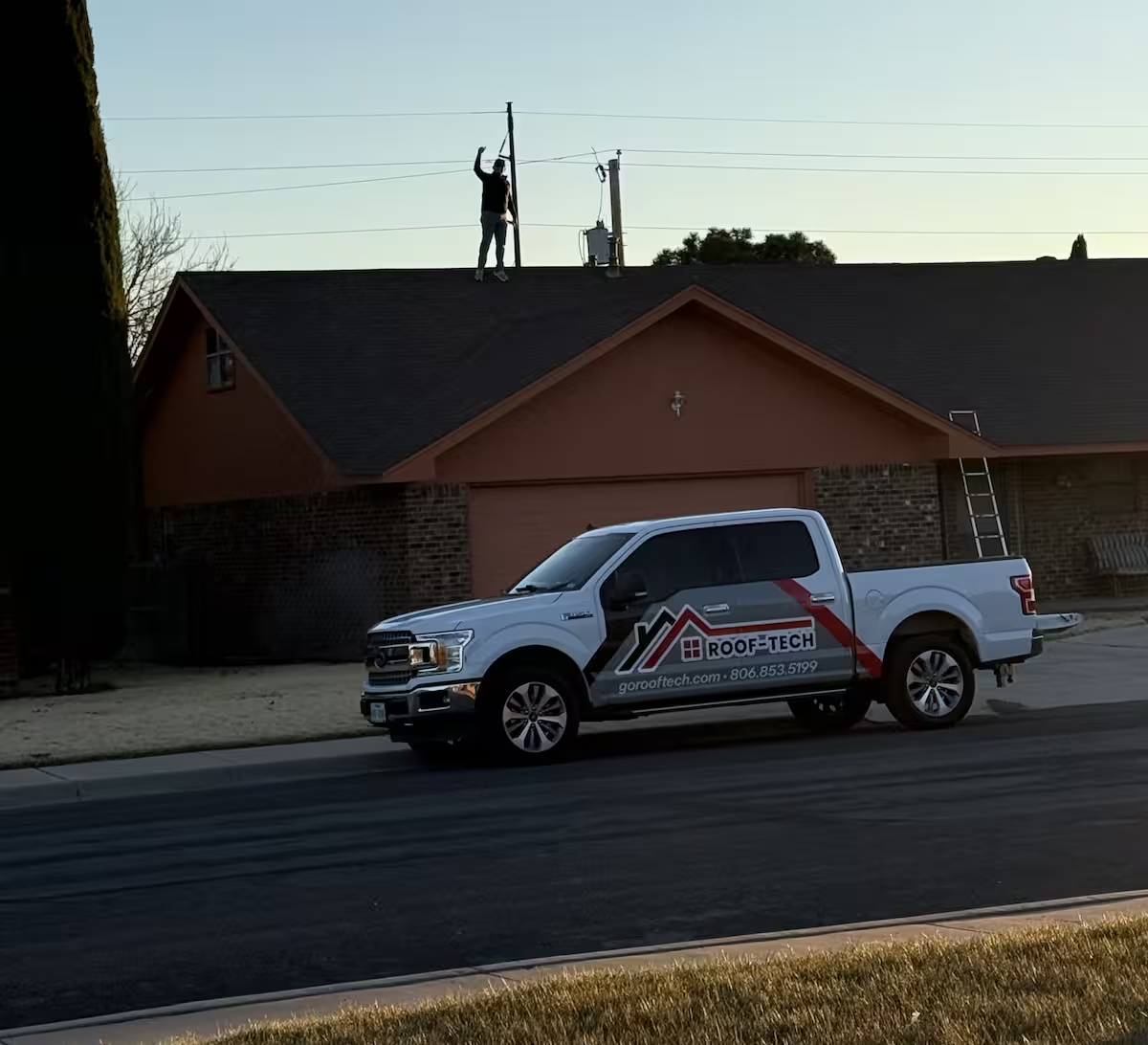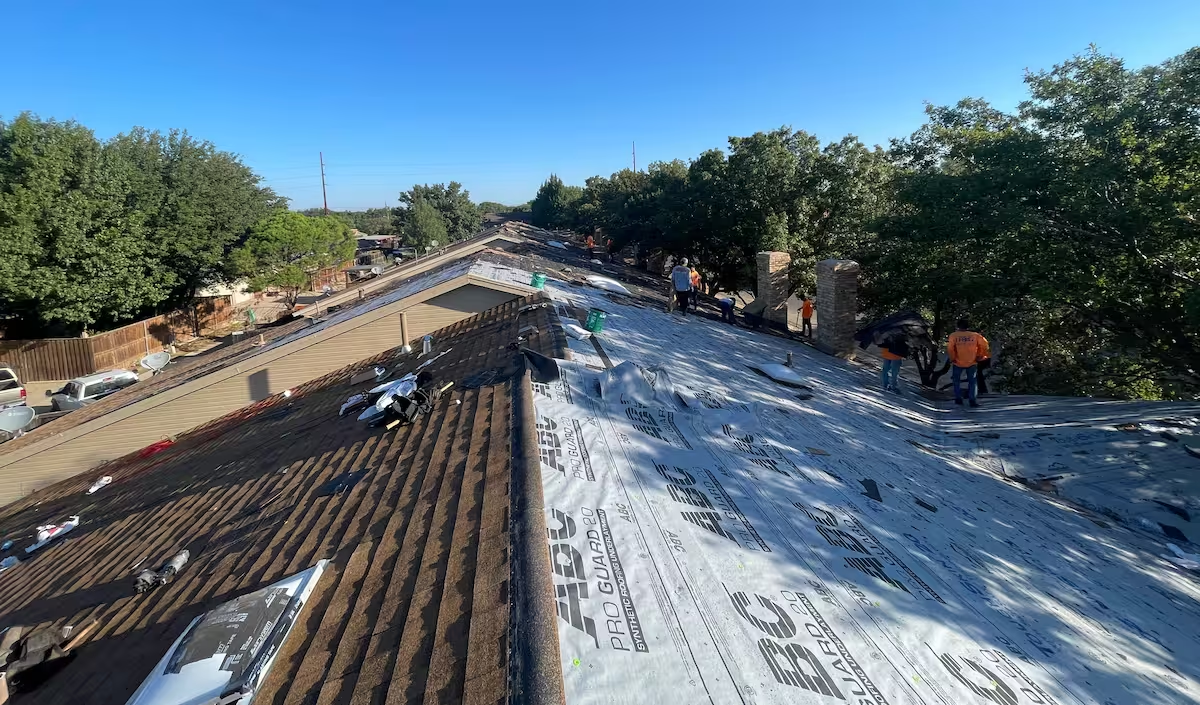Maximizing Your Roof's Lifespan
A well-maintained roof can last decades beyond its expected lifespan, while neglected roofs often fail prematurely, requiring costly replacements. Proper maintenance can extend roof life by 25-50% or more, making preventive care one of the most valuable investments in your property's protection and value.
Whether you own a residential home or commercial building, implementing these proven strategies will help maximize your roof's performance, prevent expensive repairs, and ensure optimal protection for years to come.
1. Schedule Regular Professional Inspections
Professional roof inspections are the foundation of effective roof maintenance. Schedule inspections at least twice yearly - preferably in spring and fall - to identify potential issues before they become major problems. Experienced roofers can spot subtle signs of wear, damage, or deterioration that untrained eyes might miss.
- Spring inspections assess winter storm damage and prepare for summer heat
- Fall inspections ensure readiness for harsh winter weather conditions
- Post-storm inspections identify immediate damage requiring prompt attention
- Professional documentation supports insurance claims when needed
2. Keep Gutters Clean and Functional
Clogged gutters cause water backup that can damage roof edges, fascia boards, and underlying structures. Clean gutters at least twice yearly and more frequently if your property has overhanging trees. Proper water drainage protects your roof's structural integrity and prevents costly water damage.
Gutter Maintenance Essentials
- Remove leaves, debris, and sediment that blocks water flow
- Check downspouts for clogs and ensure proper water direction
- Inspect gutter attachments and repair loose or damaged sections
- Consider gutter guards to reduce maintenance frequency
3. Trim Overhanging Tree Branches
Tree branches pose multiple threats to roof longevity, from physical damage during storms to constant abrasion that wears away protective granules. Maintain at least 6 feet of clearance between branches and your roof surface to prevent damage and reduce debris accumulation.
Regular tree maintenance also reduces leaf accumulation in gutters and prevents moss growth in shaded roof areas. Professional tree services ensure safe removal of large branches that could cause significant damage if they fall.
4. Address Minor Repairs Immediately
Small roofing problems quickly escalate into major issues when left unaddressed. Repair loose shingles, damaged flashing, and minor leaks promptly to prevent water infiltration and structural damage that can compromise your entire roofing system.
- Replace missing or damaged shingles before water penetrates underlying materials
- Seal small gaps around flashing, vents, and penetrations
- Fix minor leaks immediately to prevent mold, rot, and structural damage
- Document repairs for warranty and insurance purposes
5. Ensure Proper Attic Ventilation
Adequate attic ventilation prevents moisture buildup and temperature extremes that can damage roofing materials from underneath. Proper ventilation can extend shingle life by preventing thermal shock and ice dam formation while reducing energy costs.
Ventilation Best Practices
Install intake vents at soffits and exhaust vents at the ridge to create natural airflow. Balanced ventilation systems prevent hot air accumulation in summer and moisture problems in winter, protecting both roofing materials and interior structures.
6. Remove Debris and Prevent Accumulation
Debris accumulation traps moisture, promotes moss and algae growth, and can cause physical damage to roofing materials. Regular debris removal prevents these issues while maintaining proper drainage and extending material lifespan.
- Clear leaves, branches, and other organic matter from roof surfaces
- Remove debris from valleys and low-slope areas where accumulation occurs
- Clean around chimneys, vents, and other roof penetrations
- Use gentle cleaning methods to avoid damaging roofing materials
7. Maintain Proper Insulation Levels
Adequate attic insulation prevents ice dams, reduces thermal stress on roofing materials, and improves energy efficiency. Proper insulation maintains consistent temperatures that prevent expansion and contraction cycles that can damage shingles and other roofing components.
"Preventive maintenance costs a fraction of premature roof replacement. Investing in regular care and prompt repairs protects your property value while ensuring reliable protection for decades."
8. Apply Protective Treatments When Appropriate
Certain roofing materials benefit from periodic protective treatments that extend their lifespan and maintain appearance. Moss prevention treatments, algae cleaners, and protective coatings can add years to your roof's functional life when applied correctly.
Treatment Options
- Moss and algae prevention treatments for humid climates
- Protective coatings for metal roofing systems
- Sealant renewal for flat or low-slope commercial roofs
- UV protection treatments for exposed roofing materials
9. Monitor and Maintain Flashing Systems
Flashing around chimneys, vents, skylights, and roof edges requires regular attention to prevent water infiltration. Well-maintained flashing prevents the majority of roof leaks and protects vulnerable areas where different materials meet.
Flashing Maintenance
Inspect flashing annually for signs of separation, corrosion, or damage. Replace deteriorated caulking and sealants promptly, and consider upgrading to more durable materials during major maintenance or repairs.
10. Plan for Professional Maintenance
While homeowners can perform basic maintenance tasks, complex repairs and comprehensive assessments require professional expertise. Establish relationships with qualified roofing contractors who understand your specific roofing system and can provide specialized services when needed.
- Schedule annual professional maintenance visits
- Use certified contractors familiar with your roofing material type
- Maintain detailed records of all maintenance and repairs
- Plan major maintenance during optimal weather conditions
Commercial Roof Considerations
Commercial buildings face unique challenges including larger roof areas, complex drainage systems, and equipment installations that require specialized maintenance approaches. Commercial roofs benefit from quarterly inspections and proactive maintenance programs that address high-traffic areas and equipment mounting points.
Commercial Maintenance Priorities
- Regular inspection of HVAC equipment mounting and penetrations
- Drainage system maintenance for large flat or low-slope areas
- Traffic pattern management to prevent premature wear
- Emergency repair protocols to minimize business disruption
Seasonal Maintenance Calendar
Implementing a seasonal maintenance schedule ensures consistent care throughout the year. Different seasons present specific challenges and opportunities for roof maintenance that maximize protection and extend lifespan.
Spring Tasks
Assess winter damage, clean gutters, trim vegetation, and prepare for summer heat exposure.
Summer Tasks
Monitor for heat-related damage, ensure adequate ventilation, and address any issues before fall weather arrives.
Fall Tasks
Clean gutters again, remove debris, inspect flashing, and prepare for winter weather conditions.
Winter Tasks
Monitor for ice dams, remove snow loads when necessary, and address emergency repairs promptly.
Return on Investment
Consistent roof maintenance provides exceptional return on investment through extended material lifespan, prevented emergency repairs, and maintained property value. Maintenance costs typically represent 1-3% of roof replacement costs annually while potentially doubling the roof's functional lifespan.
Conclusion
Implementing these ten proven strategies can significantly extend your roof's lifespan while protecting your property investment. Regular inspections, prompt repairs, proper maintenance, and professional care work together to maximize performance and prevent premature failure. Whether you manage residential or commercial properties, consistent attention to roof maintenance pays dividends through reduced replacement costs, improved property value, and reliable protection. Start implementing these practices today to ensure your roof provides decades of dependable service while maintaining its protective capabilities and aesthetic appeal.
.png)



